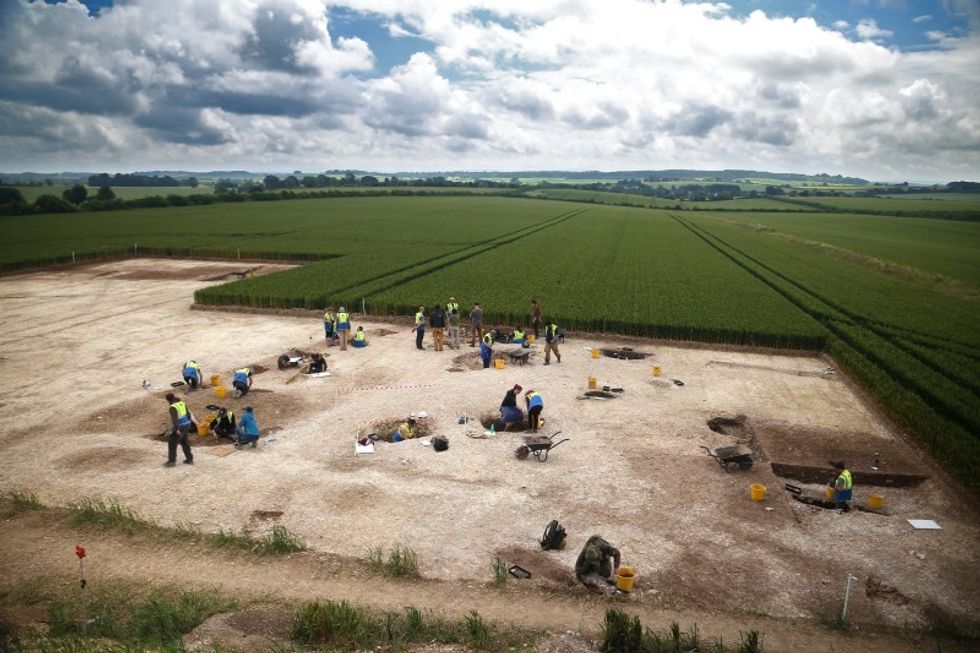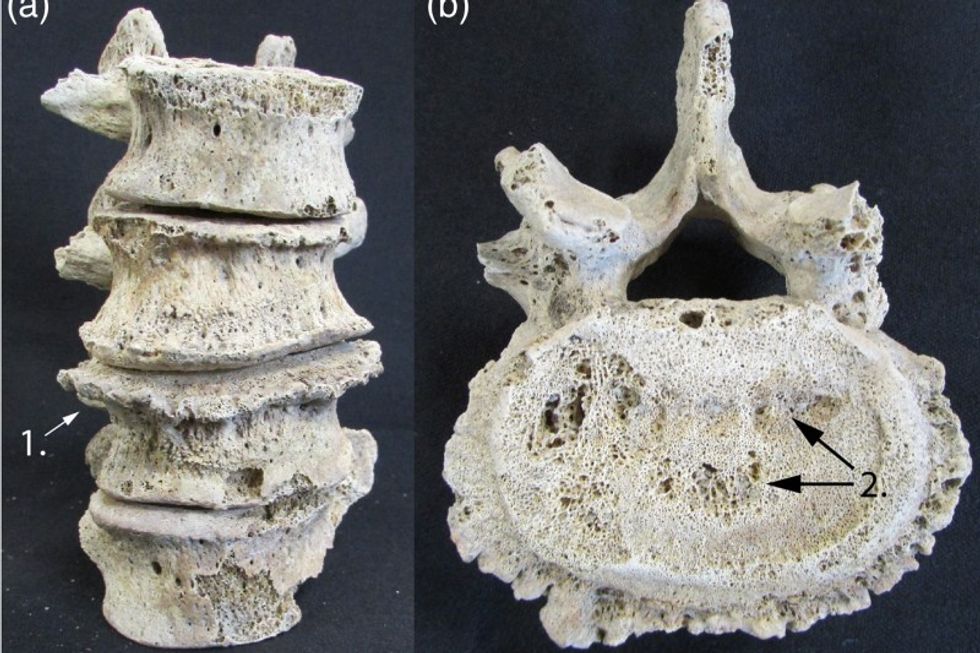The bones were found in the dig in Dorset
Bournemouth University
Experts theorise suffered damage to one of her ribs, possibly inflicted through violence, weeks before she was killed
Don't Miss
Most Read
Trending on GB News
Archaeologists have uncovered remains of a woman who they say was the victim of a grisly human sacrifice.
The bones of the woman was placed on a bed of animal bones in Dorset, on the 2,000-year-old site of Winterbourne Kingston.
Analysis suggest she was in her late 20s when she died and had lived a physically demanding and hardworking life.
Experts from Bournemouth University also found that she suffered damage to one of her ribs, possibly inflicted through violence, weeks before she was killed by a stab wound to her neck.

Students have been excavating prehistoric settlements in Winterborne Kingston in Dorset for 15 years
Bournemouth University
Experts said that the woman was left in an unusual position and was killed as part of an "offering."
Associate professor in forensic and biological anthropology at Bournemouth University Dr Martin Smith said: "In the other burials we have found, the deceased people appear to have been carefully positioned in the pit and treated with respect, but this poor woman hasn’t.
"We have also previously found ceramic pots and remains of joints of meat next to human remains, which we believe are offerings for the afterlife. This was nothing like that.
"The young woman was found lying face down on top of a strange, deliberately constructed crescent shaped arrangement of animal bone at the bottom of a pit, so it looks like she was killed as part of an offering."
LATEST DEVELOPMENTS

Degeneration of the spine suggests a rigorous and hard working life
Bournemouth University
After studying the isotopes in her teeth, the team was able to identify where she got her drinking water from as their teeth were developing as a child.
The research suggested that she originated from over twenty miles from the settlement.
Experts are now carrying out DNA analysis to establish whether she was brought to the settlement as an outsider from another community.
Dr Smith said: "All the significant facts we have found such as the problems with her spine, her tough working life, the major injury to her rib, the fact she could have come from elsewhere, and the way she was buried could be explained away in isolation."
Dr Smith added: "The burials that get the most attention tend to be those of higher status, privileged people.
"However, being able to humanise the story of this woman’s life has given us a valuable glimpse into the other side of Iron Age society. Behind every ancient burial we find is someone's story waiting to be told."








